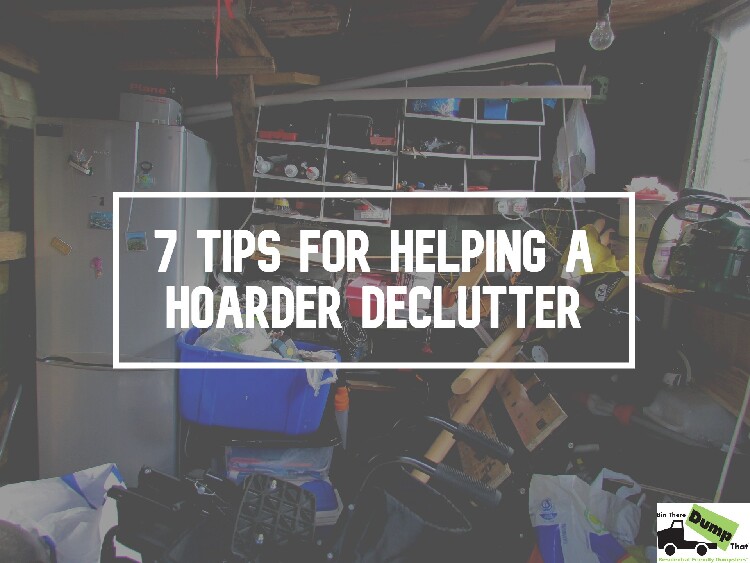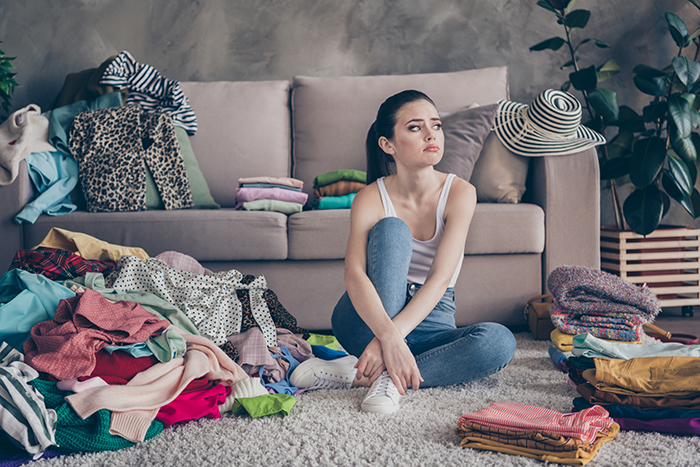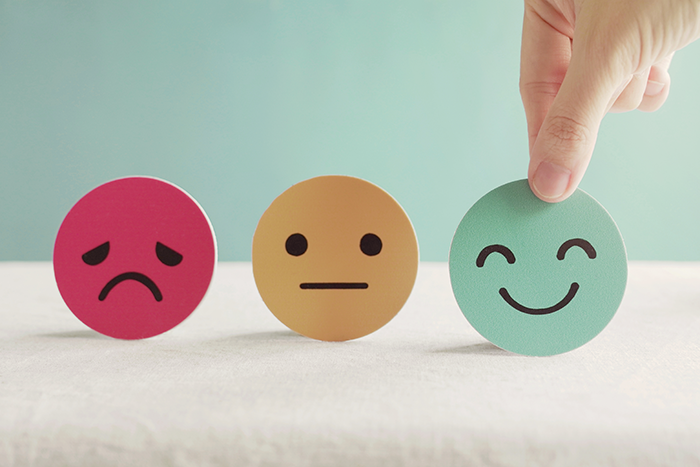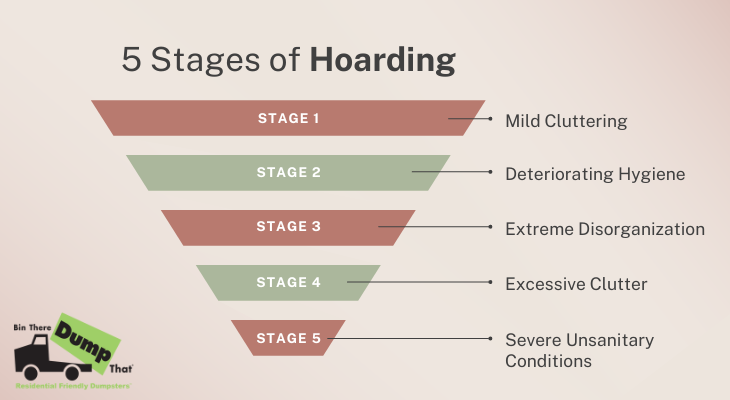
Hoarding is a clinically recognized mental health condition. The world-renowned Mayo Clinic defines hoarding disorder as the persistent difficulty discarding or eliminating possessions. These can include items that have no value and may even otherwise qualify as garbage. A person afflicted with hoarding disorder experiences significant, even debilitating, distress at the thought of having to part with items.
As a result of hoarding disorder, excessive accumulation of items occurs. Over time, the sheer volume of these items affects upon and ultimately eliminates the livable space in a residence. This can be items taking up space in the bedroom, kitchen, basement, garage or other rooms of the home. This is the definition of hoarding. How to help a hoarder clean up requires both physical and mental assistance and patience. This disorder is a mental illness and should be treated with tact and professional help, when called upon. Not only can a hoarding disorder impact the life of the hoarder but also can impact the lives of their family members and loved ones.
For these individuals, these 7 decluttering tips will help hoarders will be extremely beneficial. If you're wondering how to help hoarders, read on.
That said, if you know someone exhibiting hoarding symptoms, these tips below must be implemented with patience and tact because If you have a person in your life who meets the classification of a hoarder, and checks off the hoarding symptom checklist, this individual probably needs professional mental health intervention along with these decluttering tips.
The first step on how to help a hoarder purge is to gently and non judgmentally approach that individual and express your support and willingness to listen. Initially, you do not even need to direct attention in your conversation to the hoarding disorder itself. The ultimate purpose of this initial step is to establish a direct rapport with a person struggling with hoarding and to let them know that you can be a trusted confidant.
Gradually, you can ask general questions about the state of that individual's live and broach the subject of the number of items that person appears to be accumulating. You must be patient and this is not the time to pass any type of judgment on the hoarder. This remains a time for listening.
Our Dumpster Consultants are waiting to help you find an affordable solution to your waste disposal needs; we're ready to help you with your decluttering project!
Properly communicating with a hoarder is vital. The importance of remaining nonjudgmental throughout this process cannot be under-emphasized. Once you feel you've established a rapport with your hoarding loved one, once you feel that the individual has at least a decent amount of trust in you, suggest the possibility that the person might benefit from certain types of assistance.
In reality, a hoarder needs help along two general courses. First, he or she needs hoarding treatment, i.e. professional therapy. Second, an individual in this position needs practical assistance to aid in decluttering and eliminating the hoard.
You must keep in mind that many, if not most, hoarders do no not initially perceive that they have a problem. This is one of many characteristics of a hoarder. Indeed, a person with a hoarding disorder is likely to think he or she is doing what is proper, doing what is necessary in accumulating items. Such an individual may be inclines to go to fairly significant lengths to protect a hoard, including becoming combative.
The key is to remain patient and never push the hoarder and demand that items be eliminated immediately. A proper strategy is to suggest that getting rid of some items in the residence will make it more livable for the hoarder. For example, if the kitchen is filled with items (as often happens), reducing the hoard can free up appliances. The same holds true for the bedroom and bathroom. Eliminating items from these areas allow a person suffering from hoarding disorder the ability to begin having a more comfortable, balanced - normal - life.

Considering the state of hoarder's home and the vast amount of clutter collected, you're inclined to question, "how can I implement these decluttering tips fast?". Unfortunately, this mentality will leave you spinning your wheels and may have you back at square 1 before you know it.
Another important tip to bear in mind when helping a hoarder declutter is to get that person to buy into the process as much as possible. At the heart of that objective is developing a plan of action with the hoarder, an action plan the hoarder has ownership in creating.
At the heart of the plan is the establishment of specific criteria pertaining to what items will be kept and what items will be discarded. The action plan also needs to delineate the manner in which the discarding process will operate.
For example, when items are initially selected for elimination, they can be placed and kept in a staging area for an agreed period of time. Taking this interim approach gives a hoarder the comfort of knowing that if he or she has second thoughts about a particular item, it is not going to be immediately irretrievably gone.
Decide if the best course of action is to rent a dumpster or to haul the junk yourself.

Your initial inclination may be to dive into the decluttering process and get moving quickly. That is a natural inclination - for you. However, taking such as approach with a person with a hoarding disorder may derail the decluttering process all together. Bear in mind that a person did not become a hoarder overnight. A hoard typically did not develop in a short period of time.
Decluttering a hoard is something that by definition cannot be undertaken with the bat of an eye. You don't have to know the root cause of hoarding or the psychological causes of hoarding but it is a deliberate process that you must recognize the feelings of the hoarder. Whether it's a bunch of old containers or e-waste piling up, help them start the process of decluttering.
Reference to the hoarder having a sense of ownership over the decluttering process cannot be understated. Indeed, it is so important that it bears repeating here as its own, separate tip.
When it comes to the pace of the decluttering process, and helping a hoarder eliminate unecessary clutter and restoring order, the hoarder is the decision maker - period. The only exception is in a situation in which a person has become physically or mentally incapacitated to the point of lacking the ability to understand what is going on around him or her.
You do not need to take the burden of hoarder cleanup on your own shoulders. There are experienced compassionate professionals that can assist you and a hoarder in cleaning up and decluttering. Such a professional understands the tactics and strategies that need to be followed to accomplish the objective of decluttering and cleaning up a hoard.

Finally, in the absence of a specific strategy to prevent accumulation and clutter in the future, a majority of people with hoarding disorder will start hoarding again. As a result, implementing specific strategies to prevent an over accumulation of items in the future is vital.
Prevention can be looking for warning signs of potential hoarding. If your family member or loved one doesn't know how to downsize or doesn't want to downsize their home after their kids or loved ones have moved out, it is possible that the thought of a smaller home with less storage space will cause your loved one a lot of anxiety.
In this situation, listen, without judgement, to reasons why your loved one does not want to downsize. There could be other sentimental reasons they won't entertain the idea of downsizing a home but asking questions about relinquishing sentimental items should help you discover those aforementioned warning signs.
To recap, utilizing these strategies will be how you help a hoarder declutter:
The 5 stages of hoarding represent a gradual progression of the disorder, starting with mild cluttering and ending with living in severely unsanitary conditions.
Mild Cluttering With Little Concern: At this initial stage, individuals begin accumulating possessions without distress or concern about their increasing volume. They may perceive their clutter as ordinary collections and resist discarding items, believing they might need them in the future. This seemingly harmless behavior can gradually evolve into a more severe problem as possessions continue to accumulate.
Deteriorating Hygiene: As hoarding progresses to this stage, the clutter starts to take a toll on the hoarder's living conditions and personal hygiene. Simple tasks like cleaning or personal grooming become neglected, as the clutter begins to encroach upon essential areas of the home, such as the kitchen, bathroom, and bedroom. Out of the 5 stages of hoarding, this one is where the individual’s health starts to become affected.
Extreme disorganization: In this stage, the hoarder becomes increasingly overwhelmed by the sheer volume of clutter. The disorganization makes it difficult for them to navigate their living spaces or find specific items, causing significant disruptions to their daily activities. This level of chaos can lead to feelings of frustration, anxiety, and even shame about their living conditions.
Excessive Clutter: As hoarding reaches this point, the sheer volume of possessions becomes unmanageable. Living spaces become almost uninhabitable, with pathways obstructed by heaps of belongings. The excessive clutter renders rooms dysfunctional, making it challenging to use furniture, appliances, or even access basic utilities. The hoarder's attachment to possessions intensifies, making it increasingly difficult for them to consider discarding anything, especially old furniture.
Severe Unsanitary Conditions: The final and most severe of all the 5 stages of hoarding, the accumulated clutter fosters unsanitary and hazardous living conditions. Piles of items can block ventilation, attract pests, and create fire hazards. Mold, mildew, and rotting food may also be present, posing serious health risks to the hoarder and those around them. At this point, the hoarder's quality of life is severely compromised, and intervention becomes critically necessary to address both the mental health and environmental concerns.
Recognizing the progression of hoarding through these stages is crucial for early intervention and providing appropriate support and treatment to individuals grappling with this challenging mental health condition.

Identifying a hoarder involves recognizing patterns of behavior and signs that indicate excessive accumulation of items and difficulty letting go. One key aspect to observe is the hoarder's living space, which often becomes excessively cluttered and disorganized, making it challenging to move around or use rooms for their intended purposes. The hoarder may have difficulty discarding items, leading to an overwhelming accumulation of possessions that take up every available surface.
Another indicator is the use of external storage units. Hoarders may rent multiple storage units to accommodate their excessive belongings, often filled to capacity with items they rarely access or even remember. These storage units can become an extension of their hoarding behavior, perpetuating the cycle of accumulation and emotional attachment to possessions.
Emotional distress is another significant factor in identifying a hoarder. Hoarding is often linked to underlying emotional issues, such as anxiety, depression, or trauma. The hoarder may exhibit intense distress or anxiety when confronted with the idea of decluttering or disposing of items. They may experience extreme discomfort at the thought of parting with possessions, fearing a loss of control or attachment to memories associated with their belongings.

In addition to the physical manifestations, it is important to consider the impact on the hoarder's overall well-being. The excessive clutter and disarray can lead to unsanitary conditions, health hazards, and isolation from friends and family. The hoarder may experience feelings of shame, embarrassment, or social withdrawal due to their living situation, further exacerbating their emotional distress.
Identifying a hoarder requires sensitivity and understanding of the underlying emotional factors driving their behavior. It is crucial to approach the situation with empathy and encourage them to seek professional help from mental health experts or specialized hoarding disorder resources.
Aftercare is an essential aspect of helping hoarders maintain a clean and clutter-free home in the long term, especially after hoarder cleanup. One valuable avenue for continued support is online counseling, which provides a convenient and accessible platform for ongoing therapy and guidance.
Online counseling sessions allow hoarders to address the underlying emotional issues driving their hoarding behavior, develop coping strategies, and work towards sustainable change, thereby ensuring a successful transition to a clutter-free lifestyle.
In addition to individual counseling, participating in a support group can be immensely beneficial for hoarders seeking post-cleanup help. Support groups offer a safe and understanding environment where individuals with similar experiences can share their challenges, successes, and advice.
These groups provide a sense of community and belonging, fostering motivation and accountability, which are crucial during the aftercare phase. Hoarders can learn from others who have successfully overcome hoarding tendencies and gain valuable insights into maintaining a clean and organized living space, making their journey to recovery smoother and more successful.

Engaging with social services is another avenue that hoarders can explore for ongoing assistance. Social services can provide practical resources and guidance tailored to the hoarder's specific needs. This may include connecting them with professional organizers, waste removal services, or housing agencies that specialize in hoarding-related issues. Social services can also offer access to workshops or educational programs designed to promote healthy habits and decluttering techniques.
To ensure continued success in maintaining a clean home, hoarders should develop a personalized aftercare plan that incorporates online counseling, support groups, and engagement with social services. This multifaceted approach provides a comprehensive support system for hoarders, addressing both the emotional and practical aspects of their recovery journey.
It is crucial to emphasize that overcoming hoarding tendencies is a gradual process that requires patience and persistence. Hoarders should be encouraged to celebrate small victories and seek professional guidance when needed. With ongoing support and the implementation of effective aftercare strategies, hoarders can transform their living spaces into environments that promote well-being and a sense of peace.
By following these decluttering tips for hoarders, you will be able to provide meaningful and ultimately effective assistance in helping the hoarder clean up. You will be in the best position to see positive results when it comes to helping a hoarder declutter - staying clutter free into the future.
Friendly, professional customer service, plus fair pricing, equals value.